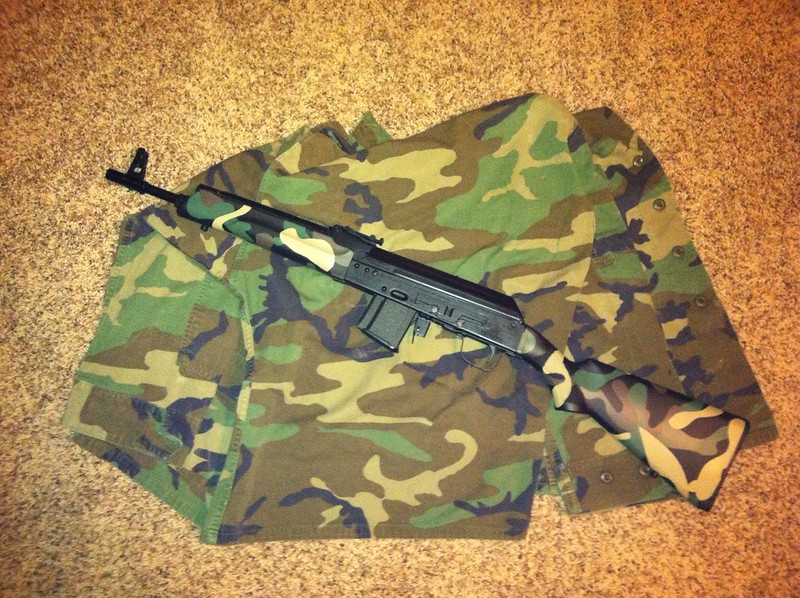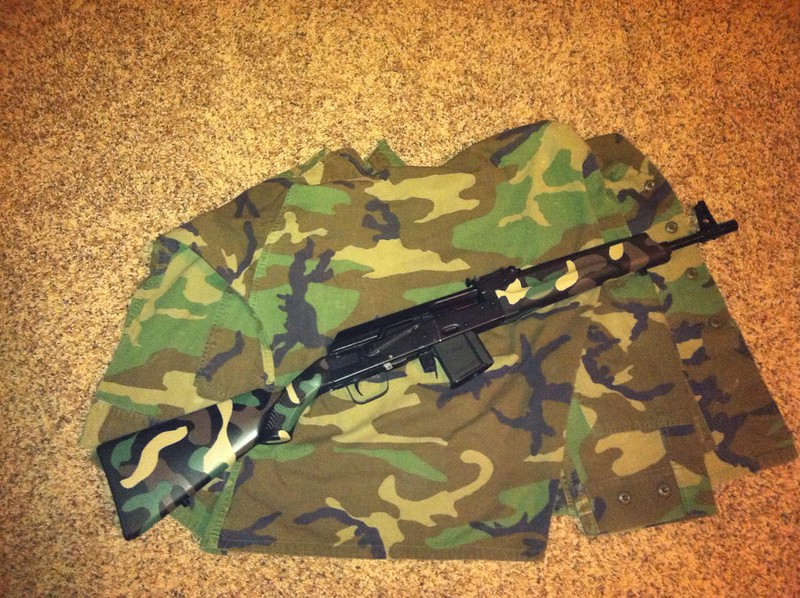I missed that link the first time. That Paasche looks like it will be right in my price range.
So far on my list of stuff to buy:
Gloves, degreaser/acetone, sandpaper/scotch brite, lacquer thinner, respirator, painters tape, airbrush, hose, extra bottles, air compressor, regulator, water trap and obviously the duracoat, reducer, and hardener.
Anything else that might be of use?
Thanks.
Get multiple widths of tape, large office tape holders are a plus.
Get both thin latex gloves for most use and heaver rubber gloves for degreasing parts (acetone degrades latex).
X acto knives for cutting and removing stencils.
Metal ruler, you'll need to cut strips of tape for scope numbers and T marks. Get a small pane of tempered glass to cut on.
Use isopropyl alcohol to degrease optics.
Small paper cups, like at the water cooler for mixing DuraCoat and hardner. Plastic cups melt.
Measuring spoons, get a set with at least a 1/2 tsp but better a 1/4 tsp for mixing small amounts of product.
Funnels for recycling acetone/degrease solution.
Can for dirty degrease solution.
Cheese cloth for filtering dirty solution.
Make or buy a hanger/stand for your airbrush.
Small metal can or bucket for cleaning paint jars and airbrush.
Make stencil tools out of 1/4" dowel rod, for placing and pushing them down. Round one end and flatten the other like a screwdriver
Use larger dowels to make handles for holding parts, you can add tape to make them custom fit. put hooks on these for hanging.
Start hoarding coat hangers. Use them for hanging and holding parts.
Wine corks are good for making barrel plugs to protect crowns.
Get a metal locker or gun cabinet and put a couple heat lamps in the bottom for a oven, you only need 110 degrees. Put rods inside for hanging parts. It cuts drying time to about 15 min, but remember to let parts cool before removing stencils.
You can also use that type of oven to leach out grease from tight spots, in case you are not completely disassembling. If you don't do that, grease may start coming out of cracks between coats.
Metal rectangle pans used for cement work are great for degreaseing. You'll need something long enough for barrels.
Some parts will need to soak overnight, have a lid to prevent acetone loss to evaporation.
Wire and plastic brushes of multiple sizes, including old toothbrushes, for degreasing and cleaning airbrush parts.
Have good lighting from multiple angles to reduce shadows.
Devise some kind of hanging system that will allow you to work more hands free and make sure you can rotate parts.
Make areas to hang degreased parts before coating.
Have dedicated rags/towels for handling degreased and hot parts. Also dedicated mat for stenciling, no greased parts ever touch it
Your hands are covered with oil, don't handle degreased or coated parts without gloves. You'll go thru lots of gloves.
With DuraCoat, adding 5-10% more hardner will increase gloss, reducing by 5% will add flatness.
I recommend a airbrush compressor; AND a two stage for your blaster and other tools. I also use HVLP but that's more for large jobs. Get the airbrush from a quality mfg, but also get the cheep one from Harbor Freight that has the multiple/quick-change cups. I use those as one-time use cups because they melt a little, but the whole thing with airbrush and 8 cups is about $7. Harbor Freight will save you money on small air tools, couplers and hoses.
Blasting makes everything easier and you can get a good/cheep cabinet from Harbor Freight, they now also stock aluminium oxide. If you really want to get into it you should also look at setting up a park tank. DuraCoat really loves parkerized steel.
DO NOT use a non explosion-proof (EP) fan to pull paint fumes. Use several to PUSH fumes out a vent or window. If you plan on doing this often or for a business I highly recommend a EP rated fan and dedicated vent.
Or, as I built, a pressurized paint booth. It's basically a closet with a window on one wall and filtered vent in the other. Using a large snail fan I pressurize the room and push the fumes and overspray out the window. To further EP the booth, the ceiling is plexiglass and sealed, with all my fluorescent lights outside the booth. Keep your compressor or HVLP turbine outside the booth also.
No sparks, flames or smoking; all this stuff can go boom.
That's all I can think of off the top of my head. I just found and joined Sniper Hide today, so sorry for the late response.



